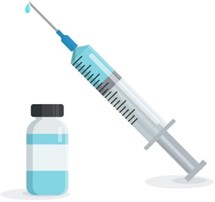A bed-bound chart has a prescription for routine urinalysis. In which way does the nurse obtain the urine sample for the laboratory?
Insert an indwelling urinary catheter
Insert an intermittent urinary catheter
Cleanse the urinary meatus and provide a sterile container
Pour urine collected from a clean bedpan into a specimen cup
The Correct Answer is C
This is known as a clean-catch urine sample. The nurse cleanses the urinary meatus to reduce the chance of contamination from bacteria on the skin. The patient then collects a urine sample in a sterile container while voiding.

Nursing Test Bank
Naxlex Comprehensive Predictor Exams
Related Questions
Correct Answer is B
Explanation
Dropping the needle cap on the floor contaminates it, and any attempt to clean it with alcohol will not make it sterile again. Therefore, the only way to ensure that the injection will be sterile is to use a new sterile syringe and needle.
Holding the syringe upright or cleansing the contaminated needle cap with alcohol is not enough to ensure sterility and can put the patient at risk for infection.

Correct Answer is D
Explanation
After an incisional biopsy of a skin lesion, the client should be instructed to keep the suture area covered with gauze to protect it from irritation and infection. The area should be kept clean and dry, but cleansing with hydrogen peroxide is not necessary and may actually delay healing. The use of hydrocortisone cream is not recommended as it may interfere with wound healing. The area should not be left open to air as this may increase the risk of infection. The client should also be instructed to avoid strenuous activity and lifting heavy objects until the site has fully healed.

Whether you are a student looking to ace your exams or a practicing nurse seeking to enhance your expertise , our nursing education contents will empower you with the confidence and competence to make a difference in the lives of patients and become a respected leader in the healthcare field.
Visit Naxlex, invest in your future and unlock endless possibilities with our unparalleled nursing education contents today
Report Wrong Answer on the Current Question
Do you disagree with the answer? If yes, what is your expected answer? Explain.
Kindly be descriptive with the issue you are facing.
